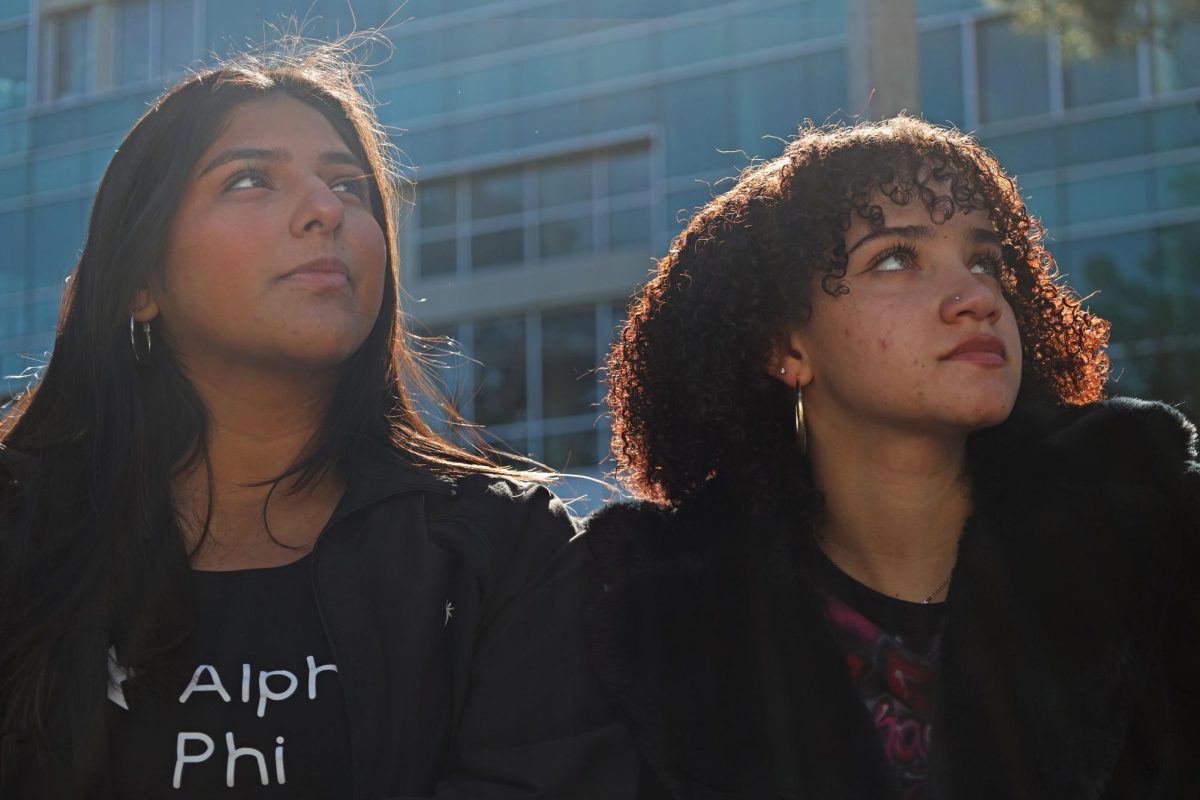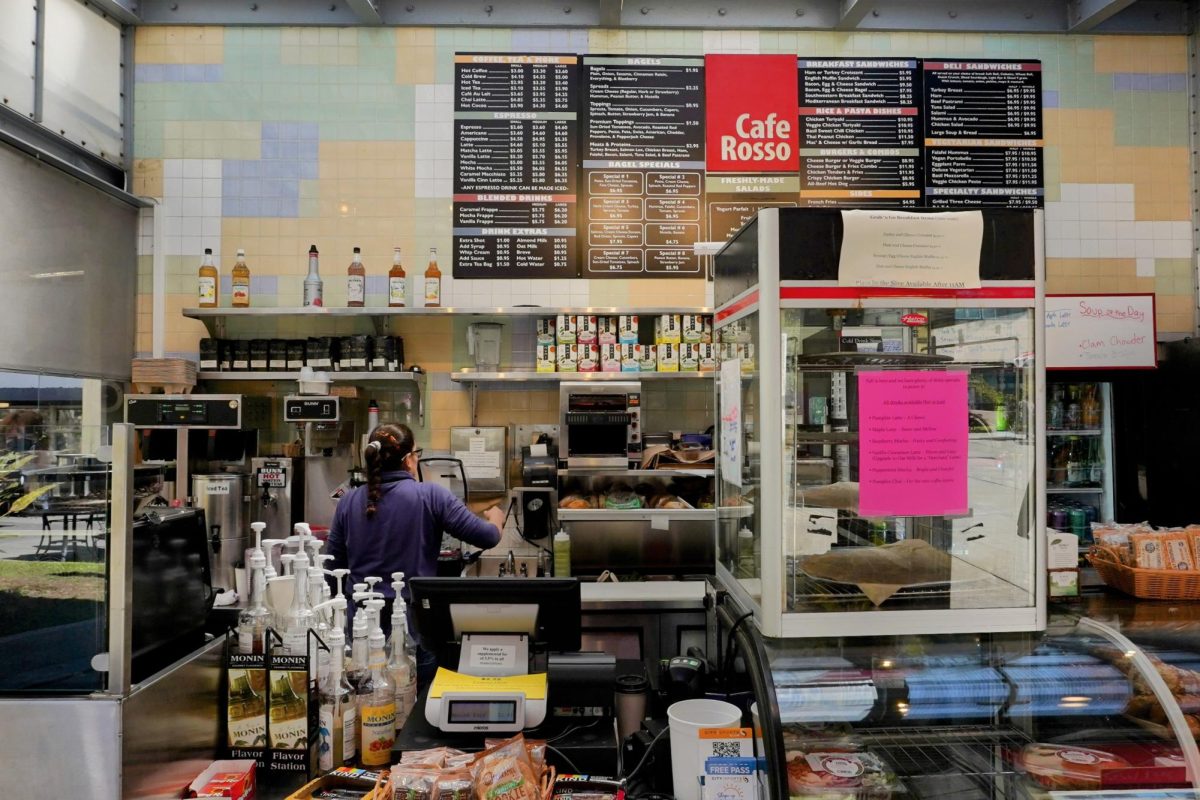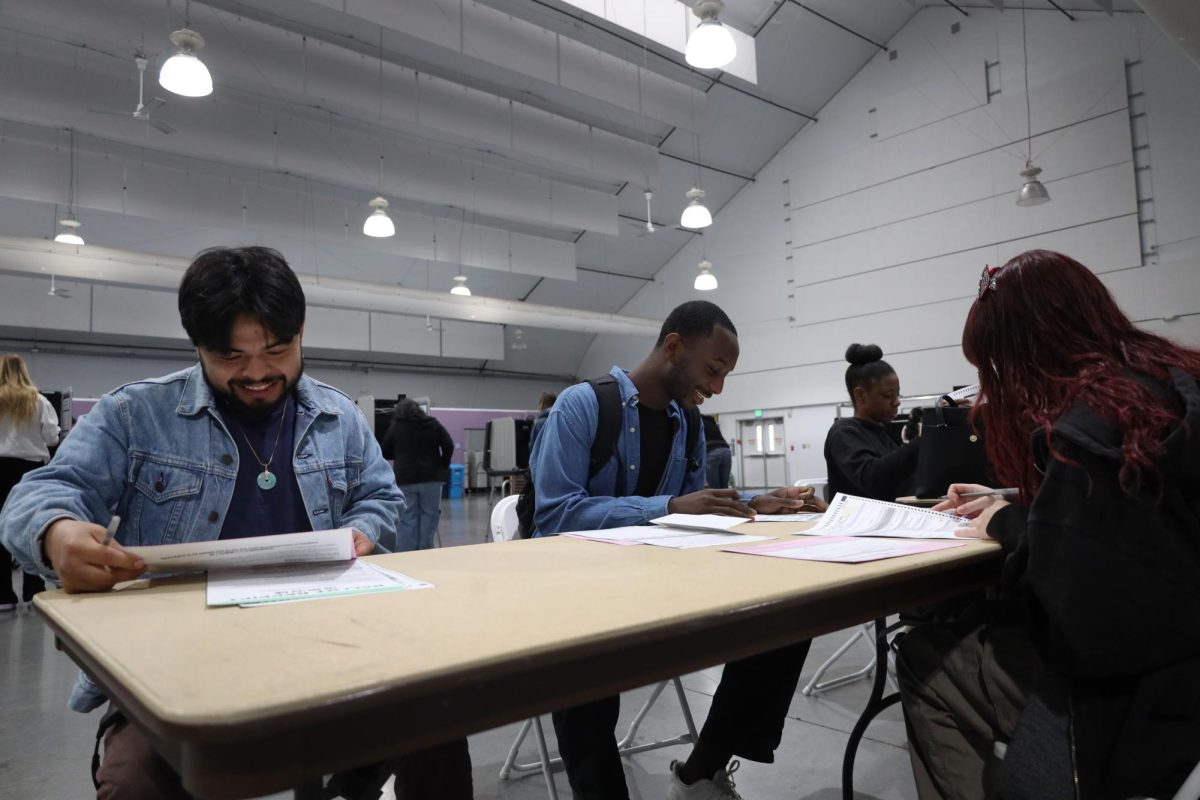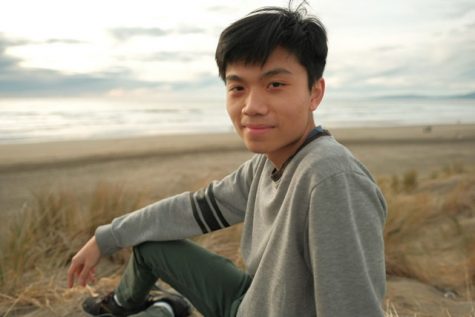Similar to most — if not all — faces of college leadership, San Francisco State University President Lynn Mahoney sends several campus-wide updates into the electronic inboxes of faculty, staff and students throughout the academic school year.
Usually, these emails represent an organized effort by Mahoney to provide clear transparency through communication within the university community — a comment on a timely issue here, or a general preview of upcoming plans there.
In a March 21 email detailing SFSU’s innovations and initiatives, Mahoney candidly addressed several challenges the school is currently grappling with. Among her circled talking points was the everlasting discussion surrounding a steady enrollment dip and underlying budget deficit, two factors that Mahoney says could result in the downsizing of CSU universities into smaller universities.
According to statistics unveiled by the University Budget Committee, SFSU’s enrollment is down roughly 21%. According to the school’s Institutional Research report, the total number of sections offered has decreased from 4,617 to 3,880 since Fall 2018.
In terms of overall enrollment, there has been a consistent decline since the school counted 30,256 students in Fall 2015. The latest report for Spring 2024 indicates a significant decrease, with enrollment now standing at 22,029.

“We need to align our expenses with our current enrollment and are actively engaged in a multi-year plan to reduce expenses,” Mahoney wrote.
Concealed beneath the surface of a seemingly ordinary email, lies a revelation marking one of the initial instances where the administration has hinted at a significant upcoming change for the campus – the envisioning of SFSU as a smaller university in the future.
“Becoming smaller is not without its pains,” Mahoney wrote. “But as the initiatives above affirm, we can become both smaller and stronger.”
According to a previous study from CSU, seven universities have been trending under their California resident enrollment targets of full-time equivalent students. San Francisco, Channel Islands, East Bay, Chico, Sonoma, Maritime and Humboldt were all CSU campuses that have faced a significant decline since the 2016-2017 academic school year.
“It’s rational to offer less classes if you have less students,” said Amy Sueyoshi, SFSU’s provost.
Despite this proclamation, numerous faculty leaders are expressing concerns that the university’s approach to downsizing is adversely affecting their departments.
Mari Hulick has never been afraid to speak her mind — it’s a trait she views as a blessing and a curse, but a trait nonetheless.
As an associate professor and the director of The School of Design at SFSU, Hulick’s responsibility includes crafting the class schedule for every academic semester. She says the administration rejected at least three iterations of the plan, emphasizing the need to reduce the number of classes. The fourth and ultimate revision was stripped down to its essentials.
That’s when she knew she needed to speak up.
“They did not give me enough money to run my program for the number of students we have,” Hulick said. “Right now, I’m in a game of chicken, where they’re basically telling me to increase class caps. And I’m saying no, I did that — I did it in the classes I could and we’re done. I can’t increase any more class caps. We’re done. We need more classes.”
Similar to SFSU overall, The School of Design has encountered its own decline in enrollment since the onset of the COVID-19 pandemic. However, while the numbers have decreased, the drop hasn’t been dramatic. Hulick mentions that throughout the pandemic, she consistently recruited new staff for the department and expanded the range of classes offered, suggesting that the situation was never dire in terms of enrollment.
In Fall 2019, The School of Design had approximately 445 students enrolled. By Spring 2024, this number had increased, with the reported enrollment reaching 575 students.
“We’re still sizable,” Hulick said.
Design classes, formerly limited to 16 students, are now scheduled to accommodate up to 20 students — a safety issue and fire hazard breach that Hulick says the university never considered while making course cut recommendations.

This change comes following recommendations from Sueyoshi, the school’s provost, who has advised department chairs to reduce the number of classes while increasing the student capacity in each class.
As a result of the abbreviated academic course offerings, students are forced to line up for summer classes like never before. The Summer 2024 courses were nearly all filled by the end of April, despite usually filling by late May or early June in previous years. The increased enrollment in those classes may stem from the absence of essential courses offered during the fall and spring semesters.
“My students go out and they compete head-to-head with those kids at California College of the Arts that are figuring out how to live in San Francisco,” Hulick said. “And those kids at CCA, they take 90 units in their major. We require only 58. That is not enough time with a student to build a portfolio, but yet our students do compete with their students. I want to add more classes and not take away any more. And they want us to basically degrade our degrees and then want to degrade the student experience by increasing class size.”
To put another twist on the schedule for students, Mahoney released an edict to faculty that requires 75% of classes to be conducted in-person, on campus.
According to Bobby King, the director of communications in the office of the president, university research shows that students are more likely to succeed in face-to-face learning experiences.
“Our competitors have all moved to even larger percentages of in-person classes, reflecting the need to create robust campus experiences for undergraduates,” King said. “San Jose State — as one example — is currently offering 85% of its courses in person.”
After a recent meeting, Hulick — a strong believer that SFSU is hiding its enrollment decline — says she sent a request to the administration about the top ten programs on campus that were successful in retaining students. Instead, she says the university supplied her with a list of programs that lost the most students.
“They’re not making steps to increase faculty morale or faculty engagement and understanding,” Hulick said. “Our campus claims to be transparent, but it’s not.”
King says while SFSU wishes the enrollment figure was higher, the overall reduction reflects demographic changes in the Bay Area, across California, and nationally.
“Enrollment figures are published locally and statewide,” King said. “They’re all drawn directly from the student system and reflect actual enrollments. There would be no benefit to anyone to report lower enrollment numbers. The CSU and SFSU are funded based on enrollment. Lower numbers would adversely affect the university’s ability to operate and artificially suppress funding.”
Hulick suggests that SFSU has not fully capitalized on two key marketing angles: San Francisco’s reputation as a creative hub in the United States and the Bay Area’s image as a prosperous place to reside. She cited the College of Creative Arts and UC Berkeley as key examples of institutions that have embraced their local ties.
“There are people who sneeze million-dollar bills in this town,” Hulick said. “The excess wealth in this town is unimaginable. Where is the support? Where are we going to get the support from — deep pockets that are right here? Why aren’t we getting that money? What is wrong with us?”
In March, UC Berkeley announced that over 225,000 donors contributed to raise more than $7 million in one of the largest capital campaigns launched by a public or private university in the United States.
Berkeley and SFSU have distinctive differences. The University of California system is largely funded through both public money from state funds and private money from donor groups. In contrast, the California State University system — dubbed the “people’s university” — receives nearly half of its funding through state taxpayer contributions, with the rest coming from tuition.
Despite the significant differences between the two campuses, John Logan, the chair of the Labor and Employment Studies department at SFSU, encourages the university to follow Berkeley’s example. He suggests that instead of focusing on the drawbacks and high costs of the Bay Area, SFSU should capitalize on the region’s substantial wealth for fundraising purposes.
“San Francisco has always been an expensive city,” Logan said. “Yes, we do have a growing problem with cost of accommodation. But it’s also an incredibly vibrant and wealthy and innovative city. There are lots of opportunities that go along with being located in San Francisco — opportunities for students after they graduate. Look at all the incredible businesses and organizations that are located in the city, opportunities for fundraising. There’s incredible wealth in San Francisco and the Bay Area.”
Victor De La Rosa has been a faculty member at SFSU’s School of Art for 18 years, and in 2022, he made history as the program’s first Latino director.
In late April, De La Rosa was removed from his role as director, despite his term already expiring following the academic school year. He was replaced by Resha Cardone, an associate dean in the College of Liberal & Creative Arts. While he’s no longer directing, De La Rosa — still employed by the school — finished the semester as an instructor in the department and will continue to teach in subsequent years.
De La Rosa describes the move as unexpected, noting that he received the notice via email and had no time to inform his fellow faculty members about his removal. To this day, he remains unaware of the exact reason behind the school’s decision, but he believes he can connect the dots.
“Even though I asked why, I’m only getting some sort of bureaucratic answer,” De La Rosa said. “But I do feel like it was because I was asking some questions that they didn’t want me to be asking in public forums. That would be the only reason to get rid of somebody mid-term, meaning mid-semester.”

The questions De La Rosa was raising in public forums were pushing back against the class cuts proposal and asking if the upper administration was aware of the LCA’s plans to cancel art classes that are historically full — many of which are seemingly always filled in the first two weeks of availability.
He says they didn’t have any type of response.
Like Hulick, De La Rosa says he was asked to make revisions to an already bare-bones schedule for Spring 2024 and he initially refused to make any adjustments until his questions were answered.
“We cut classes in spring and we had students who dropped out of school because they couldn’t get the classes they needed or wanted,” De La Rosa said. “They certainly quit our major — they might have changed majors. But I was really pushing back because of the experience we had for Spring 2024. I knew that it would be the faculty and the students who would be having the most trouble making the connection of getting students into classes.”
The university offers courses based on student enrollment demand and graduation requirements, which wouldn’t cut popular classes, according to King. He says the decline in enrollment might cause fewer sections to be available, but it would be proportional to the decrease in the demand.
“Also, there were still open seats available in SF State courses in February when enrollment numbers are finalized (12,051 open seats across all undergraduate courses combined and 3,712 graduate seats) which would seem to reflect ample availability even after the start of the semester,” King said.
In an exclusive interview with Golden Gate Xpress, Mahoney said none of these course cuts should impact the graduation trajectory of students.
“People tend to just look at the tree in front of them and say, ‘Oh, there’s plenty of demand for that tree. Why don’t they let me have a second tree?’ Well, because you got three dying trees behind you — get rid of one of those trees and that would pay for it. I didn’t want to minimize how hard this is, but it has to be done.”
The School of Art has returned to enrollment numbers achieved directly before the pandemic, according to the school’s Institutional Research database.
In Fall 2019, there were 458 reported students, while in Spring 2024, the reported number of students decreased barely to 457 — a sign the program has revived itself, yet courses are still being removed.
“We thought we had done our work by keeping our classes in demand and serving the students by giving them as many seats as we could,” De La Rosa said. “I was not expecting a budget that would cut anything in Fall 2024 because we were doing what was asked of us. We were filling seats, giving students opportunities to get into classes and filling classes. But apparently, that is clashing with this directive of cutting the budget.”
According to multiple faculty members interviewed by Golden Gate Xpress, a common concern about SFSU becoming a smaller campus has been the negative effect on programs associated with humanities and within the College of Liberal Arts.
The number and percentage of high school graduates applying to college have reached their lowest level in nearly two decades, according to the Bureau of Labor Statistics. For undergraduates, college enrollment experienced an 8% drop from 2019 to 2022, marking the most significant decline on record — individuals are legitimately questioning whether it’s worth the investment.
De La Rosa emphasizes that students’ primary feedback to faculty revolves around their discomfort on campus. Many express disappointment upon realizing that SFSU does not match their expectations of a liberal and vibrant environment; instead, it feels more like an empty mall, according to De La Rosa.
“I went to this school,” De La Rosa said. “I’m a product of this school. This school instilled in me self-worth. I see my students today — they’re not any different than I was. They grew up thinking they couldn’t do certain things. And that’s why I’m passionate about giving the students the resources they need here because it did change my life. And I know it can change thousands of other lives, too.”
The Modern Languages department at SFSU has also experienced several uncertainties with its future.
SFSU was once the sole CSU campus providing instruction in ten languages. However, recent budgetary constraints have necessitated changes in nearly every language the department offers. Until this spring, the department provided courses in Arabic, Chinese, French, German, Italian, Japanese, Persian, Spanish, Russian, and Korean, with six of them considered as majors.
“Last year, every language program had to absorb cuts,” said Frederik Green, the chair of the Modern Languages Department. “And this didn’t start this year. This has been going on for a couple of years. As long as I’ve been here, I think we’ve never seen growth. It’s always been cuts.”
Green, a 12-year veteran at SFSU and a staple in the Chinese program, highlights a distinctive feature of his department: the ratio between lecturers and tenure-track faculty differs from most others. For instance, when a German tenure-track professor retires, the school typically doesn’t promptly replace them. A Spanish instructor wouldn’t have the flexibility to teach across various classes in the department, unlike faculty in other disciplines, such as Mathematics, who can easily move around.
“Our department really was — this year — in a position where there was nothing left to cut in the major degree programs without really making it impossible for students to graduate,” Green said. “There still needed to be more cuts. So the programs that do not have degrees, majors or minors, were cut because we didn’t have the funds, we weren’t given the funds to pay for those lecturers.”
After being added into the fold a few years ago courtesy of a grant, the Korean program rose through the ranks as one of the more popular languages to study on campus — two classes were offered and Green says they usually filled within hours with instructors having to let in extra students.
With a clean sweep due to cuts, Modern Languages lost the program. They also won’t be able to offer Russian classes in the fall, which is a concern for Green because of the recent world events centered around the Russian-Ukraine war.
“From an equity and inclusion point of view, I think it’s sad,” Green said. “We have a war in the Middle East going on. I think if this university should do one thing it should promote cultural understanding. One way to do that is to teach cultural and linguistic awareness to others. We have a war in Central Europe between Europe and Russia. And we’re cutting our Russian classes. I don’t think it’s what we should be doing.”
Green has rallied behind a possible language requirement, which many in the department are also supporting.
“Last year, we tried to lobby for a language proficiency requirement,” Green said. “We actually put forward a proposal to the university to the senate committees, which I think has not even been considered yet. Our main point was that this is really a question about equity. If you’re a Spanish speaker or a Chinese speaker, because you speak it at home, the university should recognize it as a skill. You should get credit for that.”
Sueyoshi says the cuts in the Modern Language department are simply keeping up with the current student demands.
“Imagine if we had the same set of faculty from 1960 as we do now in 2024,” Sueyoshi said. “We would have only one or two computer science faculty — we would maybe have zero computer engineering faculty. I mean, the world is changing and it has been changing. We absolutely have to do a good job keeping up making sure that our curriculum stays current with both the demands of the students and also the demands of society.”










Ricardo Grande • May 24, 2024 at 6:38 am
Why is it always the same story, a delusional college leadership that insists the problem is anything else but themselves? It’s stunning that the university leadership is unaware that it is their policy of myopic political views, promotion of non-inclusive behavior and a total lack of diversity of thought that is driving students to institutions that believe teaching how to think is more valuable to the students than teaching WHAT to think. Hopefully the budget cuts are focused on leadership cuts, and non-core student courses.